12v Underfloor Heating for Almost Any Van - Specially Tested for VW T3, T25 & Vanagon
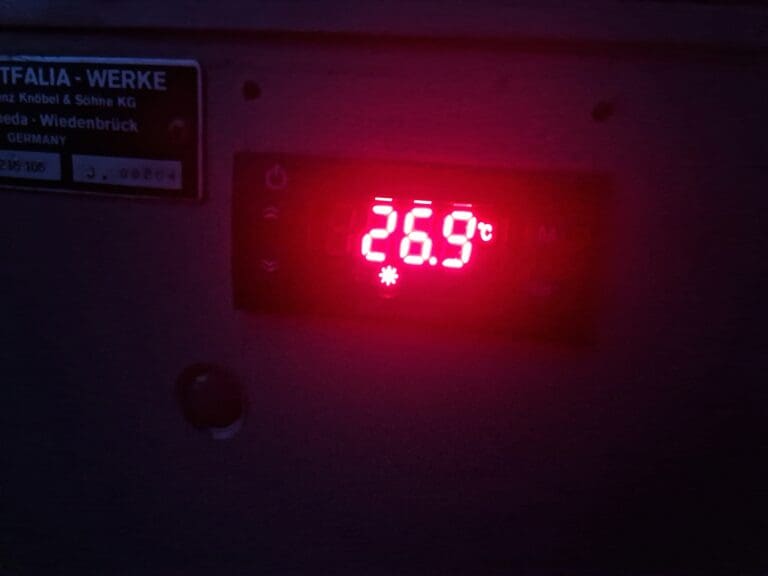
VW T3 T25 Vanagon 12v Underfloor heating yes you read correctly. We are pleased to announce the introduction of the next level of luxury for all VW T3 T25 Vanagon vans. Our newly developed Underfloor and panel heating systems for your pride and joy. These are the perfect heating option for travel and adventure. Whether ceilings or floors, low-voltage heating foils are extremely flexible, but are easy to lay and quick to install. No holes or drilling your floor, no flames poisonous or explosive gases or liquids to worry about.
12V Electric Underfloor Heating
12v Electric Underfloor heating is powered by Heating foil. The heating foil also called carbon heating film, is the thinnest version of electric floor heating at 0.336mm thick.
It consists of two copper strips that supply an electrically conductive coating on a carrier material. Almost the entire surface within the heating foil heats up evenly and thus provides, Over the entire laid surface for pleasantly warm floor.
Compared to other electronic heating systems, the energy used is converted into infrared rays with almost no loss. What makes the infrared heating foil so efficient, 98% to be precise. The radiation generated by the surface heating is not dangerous, on the contrary, it provides your body with a healthy warmth and allergy sufferers need not fear anything, as there is no whirling up when the heat is released.
The structure of Carbon Heating Film
The structure of carbon heating films
In tried and tested production processes, special carbon pastes are the basis for standard heating films. However, the most modern production methods currently rely on shaping the extracted carbon into microscopically small carbon nanotubes. These carbon nanotubes, also known as carbon nanotubes (CNTs), are honeycomb-like lattices of carbon atoms and have diameters of 1 to 50 nanometres. This hitherto unique technology enables a significant gain in efficiency.
In further steps, the carbon pastes or carbon nanotubes are applied together with two copper strips to thin PET films. Additional silver strips are applied in the transverse direction, which ensure an optimal current flow onto the carbon material. Up to 6 additional layers of robust and waterproof PET film ensure the necessary durability and stability of the heating film.
As soon as a voltage is applied to the copper bands of the heating films, the carbon material heats up and uniformly emits long-wave infrared radiation with an IR wavelength of 7-14 micrometres (IR-C radiation) similar to that of the sun. Incidentally, the effect of the carbon heating films can also be compared with the sun. When the infrared rays hit solid bodies, they cause the molecules on the surface to vibrate. This creates warmth, which many people find particularly pleasant.
What are the advantages of a carbon heating film?
The installation heights of carbon heating films are usually between 0.366 mm and 0.60 mm, depending on the model, and are thus among the thinnest variants of electric heating systems.
In residential and commercial properties, carbon heating systems are usually used as surface heating systems. They emit the cosy radiant heat, e.g. via floors, walls or ceilings, to the respective room. Unlike conventional radiators (convectors), the air is only heated indirectly. As a result, convection of the heat and the associated circulation of the air are largely absent, so that less dust is stirred up. This is particularly pleasing for allergy sufferers.
In connection with electric panel heating, it is important to know that the perceived temperature in a room is made up of the air temperature and the surface temperature of the respective objects. So if the walls, floors and objects in a room are warm, we feel comfortable even at lower air temperatures. And lower air temperatures are in turn associated with lower heat losses, as well as lower heating costs. Studies have shown that the room temperature can be around two degrees Celsius lower when infrared heaters are used, without any loss of comfort. Just lowering the room temperature by only 1°C can result in energy savings of 5-7%.
In addition, a carbon heater converts electrical energy into heating energy with almost no losses, which is why this technology is considered particularly efficient. The effective heating power of heating films is always given as power per square metre and ranges from approx. 50 to 1500W/m². In residential and commercial spaces, however, the heating output ranges at a maximum of 200W/m²; carbon heating films above this threshold are more likely to be used for DIY projects or industrial purposes.
When heating properties, another advantage of electric panel heating, apart from the purely visual aspects, is the relative saving of space. This is because the heating films disappear quasi invisibly under floor coverings or wall or ceiling panelling and do not take up any of the usable space in the rooms.
Carbon heating films are ideally suited as surface heating systems in residential and commercial buildings and of course campervans.
Carbon heating mats are more efficient than heating mats with copper conductors
Further areas of application for carbon heating elements
In addition to the use in heating films, carbon fibres are also used in infrared heating panels, textile heating elements, carbon heating paint or special carbon fibre underfloor heating mats. The functional principle is the same in all applications. The current-carrying carbon material immediately generates long-wave infrared radiation, which provides a pleasant feeling of warmth after a very short lead time.
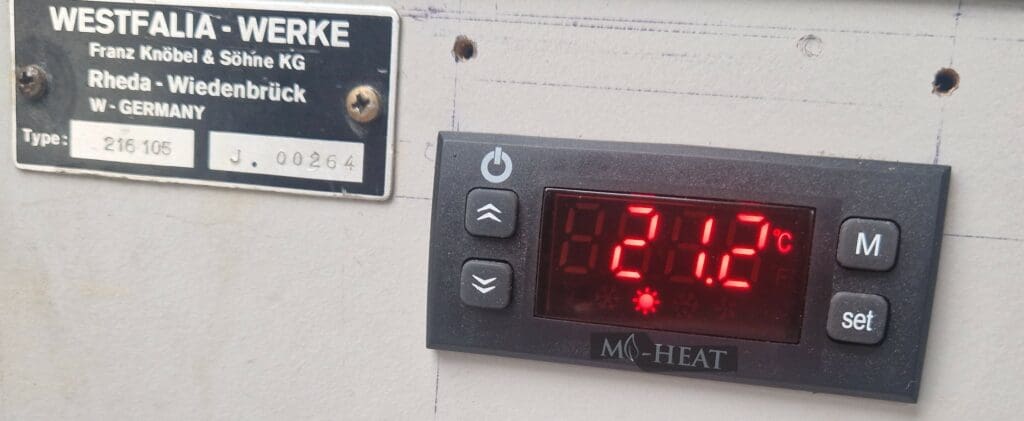
The 12Volt DC version is ideal for use in the car, motor home or camping.
The surface reaches a max temperature of 35-40C°, depending on the substrate and ambient temperature. The heating film is available in various widths 14cm, 30 and 50cm and up to 3-metres in length (for the purposes of testing we have installed 2 1 metre lengths which gives 1 square metre of heating surface on the floor more info below ). Due to its width this heating film is for small projects such as underfloor heating, heating for battery box, panel and even ceiling heating.
The kit we have put together covers 1 square metre which fills most of the floor space and we think is adequate for a VW T3 T25 and is the best balance of resources and also current draw. However the base kit has the capacity to be expanded to 2 square metres if one requires this could include foil used for panel heating or in an additional space such as the roof of a camper we also looking at an additional temperature controller which has the option of dual outputs to control different zones if required
The properties of 12V Underfloor Heating are as follows :
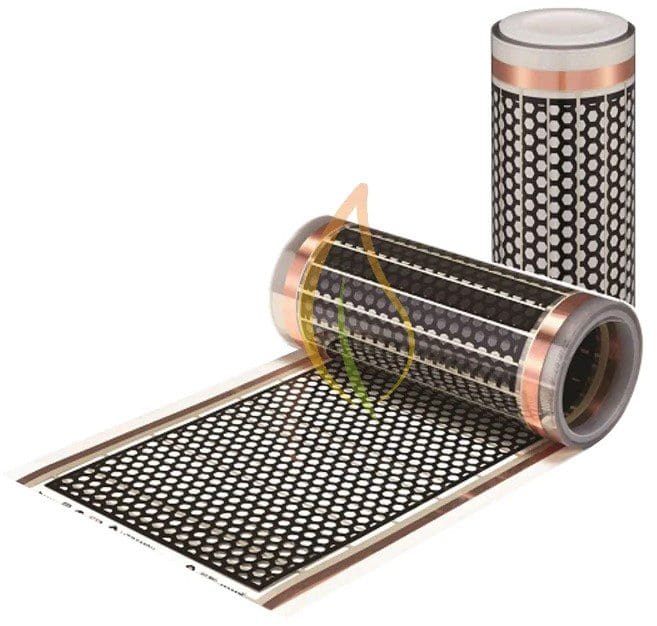
The properties of 12V Underfloor Heating are as follows :
• Silent
• Safe all components are from European suppliers and conform to EU safety standards. No flames poisonous or explosive gases or liquids to worry about.
• Inexpensive compared to other heating alternatives
• Low installation height and weight, space-saving. No additional tanks to worry about. No drilling holes in the floor.
• Can be left on whilst driving or parked up
• A perfect complement to solar charging installations.
• Can be used to compliment existing blown air heaters.
• Ideal for stealth camping
• Very high energy efficiency 98%
• Reduced mould formation
• Easy, quick and safe Installation
• Expandable
• Flexible, robust and reliable
• Homogeneous energy distribution
• Uniform surface temperature
• Maintenance-free
• Long-lasting
• Use highly efficient conductive ink technology.
• Compatible with many floor materials wood, vinyl or linoleum
• Extremely thin & durable
• Disperses an evenly consistent heat.
• Low warm-up time
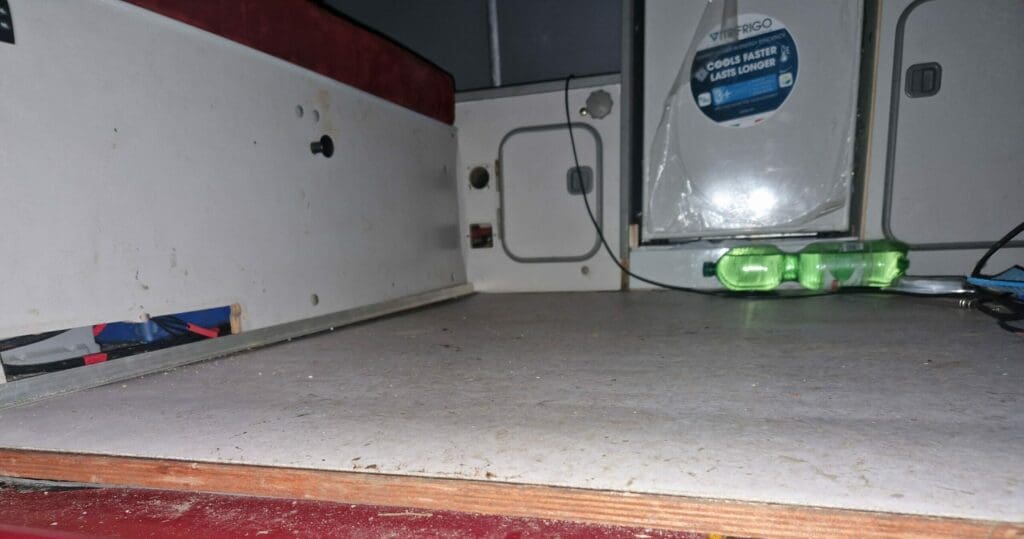
Technical data:
12V Heating Film
Operating voltage: 12 Volts
Max. Power consumption: 130 watts/m²
Heating surface per m²: 74
Path width: 50cm
Active area: 47cm
IR wavelength: 7-14 microns
Temperature resistance: up to 80°C
Efficiency: 98%
Max. Web length: 3 meters in one piece
Shortenable: Yes, every 2,5cm
Material thickness: 0,366mm
Insulation: 2-ply, 1-ply insulated
Heating Film Underlay
Material thickness: 5mm
Material: extruded polystyrene foam
Punctual compensation: up to 4mm
Compressive strength: 90kPa
Permanent compressive strength: 25kPa
Dynamic compressive strength: 250,000 cycles
Shock resistance: 140cm
Water vapor diffusion resistance: 100m
Thermal resistance: ~ 0.15m²K / W
Impact sound reduction: 22dB
Heating Film Overlay Vapour Barrier
Film thickness: 120µ (0,12mm)
Material: Polyethylene foil
Colour: white/transparent
Width: 2m
Heat transmission resistance: 0,01
12V Thermostat
Mounting: flush-mounted, hole size 71x29mm
Version: cable-connected
Operating voltage: 12V AC/DC
Max. switching capacity: 20A / 240 Watt
Control mode: two-point control ON-OFF
Operating temperature: 5-45°C
Sensor: External
Temperature control range(Internal): –
Temperature control range (external): -50 – +150°C (floor sensor)
Frost protection: Yes
Floor limitation range: -50 – +150°C
Display/illumination: Yes/Yes
IP protection class: IP65
Dimensions(WxHxD): 76x35x77mm

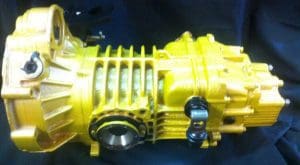
Bonjour, Quelles sont les dimension des bandes de chauffage par le sol? quelle est la consommation en (Watts) en 12 volts et quel est le prix d’un panneau?
Merci d’avance